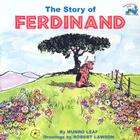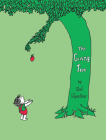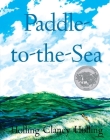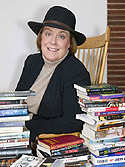Children's Books That Changed the Way Booksellers See the World
Anita Silvey, the editor of Everything I Need to Know I Learned From a Children's Book, coming this month from Roaring Brook Press, recently asked booksellers across the country to the answer the question, what children's book changed the way you see the world? Here, she shares some of their responses, as well as personal insights about some of the best-loved children's books.

Andy Lacher of BookStacks in Bucksport, Maine, wrote about The Story of Ferdinand. For him, the book emphasized passive resistance and "taking time to smell the flowers but staying strong, too."
Ferdinand has one of the most surprising backstories of all our classics. Munro Leaf and Robert Lawson eventually would live near each other in Connecticut, but when they worked on this book, they both resided in New York City. Leaf -- a political leftist like Dr. Seuss, Wanda Gag, Rockwell Kent, and Lynd Ward -- always insisted that he chose a bull for a protagonist because bunnies and kittens had been done to death.

The book appeared at the time of Spanish Civil War, and everyone assumed it promoted a political message -- although some confusion existed about the nature of that message. It was attacked for being both Fascist and Socialist. Hitler burned it; it was banned in Spain. Such notoriety meant that every major political figure -- from Franklin Roosevelt to Mahatma Gandhi -- could articulate their position on this small book. Of course, controversy and censorship always sell books. With all of this attention The Story of Ferdinand rose to the top of the New York Times bestseller list.
In my research for Everything I Need to Know I Learned From a Children's Book, I was intrigued to learn that Leaf's classic is beloved by alternative rockers -- people like Pete Wentz of Fall Out Boys -- who applaud the book's premise that individuals should do what they need to do, not what society expects. So Munroe Leaf still inspires those who take their own road, much as he did in his lifetime.
Two booksellers mentioned Shel Silverstein's The Giving Tree. "The story confirmed a suspicion I had that the world was a complex and bittersweet place," wrote Angela K. Sherrill of 57th Street Books in Chicago.

I myself first read The Giving Tree as an adult during the 1970s, and the concept that a female tree would sacrifice everything for a male made me ill. But then I was bringing an adult, 1970's perspective to the book.
However, Luan Stauss of Laurel Book Store in Oakland, California, wrote a response that intrigued me. The Giving Tree is "among the most important pieces of literature written in the 20th century," she said. "If everyone in the whole world read this book, there would be no war. I know I didn't feel this way as a child. The Giving Tree then was a perplexing, and possibly disturbing, tale about a boy who apparently seemed to take full advantage of the generosity of a naive tree... I took the story too literally as a child, compared to the adult I would become. Now, as a grown-up, I see the story as a tale of unconditional giving, and the tree as the parent every adult should aspire to be."
Obviously, Luan appreciates the book as an adult, but did not as a child. So I will have to think about this book again -- and reexamine my own theories.
Ellen Mager of Booktenders' Secret Garden Children's Bookstore & Gallery in Doylestown, Pennsylvania, selected The Secret Garden as her favorite. I could actually create an entire book with essays about Frances Hodgson Burnett's masterpiece.

Right next to my writing desk, I keep a first book club edition of this title. Purchased by my mother's great aunt, who was born in 1865, at the end of the Civil War, the book was then passed on to my mother, who read it to me. When I look at this well-worn volume, I am connected to all the women in my family, back to the time of the Civil War. For me, it is one of those classics that I pick up every few years; it only gets richer with each reading.
Finally, my friend Cliff Wohl (who once pushed my car out of a ditch -- but that is another story) of Books & Books in Miami Beach, Florida, found his favorite children's book as an adult: Holling C. Holling's Paddle to the Sea.

The last essay in Everything I Need to Know I Learned From a Children's Book is entitled "It is never too late to have your life changed by a children's book" by Mazza [Museum of International Art From Picture Books] curator Jerry J. Mallett. There are many people, like Cliff and Jerry, who find inspiration from a children's book later in life.
Time and space make it necessary for me to wrap up this column, although I would love to discuss every book submitted. I hope I see some of you while I am out on the road this fall. But even more important, I hope you can take to heart what I learned while working on this book. Many of those interviewed talked about the bookstore where they found their favorite title; they talked about the person who put the book in their hands. As you do your daily work, providing customers with what they need, you are truly shaping the future leaders of our society. As I say in the introduction to the book, "When we give children books, we become part of their future, part of their most cherished memories, and part of their entire life." --Anita Silvey
Anita Silvey is the editor of Everything I Need to Know I Learned From a Children's Book: Life Lessons From Notable People From All Walks of Life, published by Roaring Brook Press, an imprint of Macmillan Children's Publishing Group. Her other works include 500 Great Books for Teens, 100 Best Books for Children, and The Essential Guide to Children's Books and Their Creators. To learn more, visit www.anitasilvey.com.
